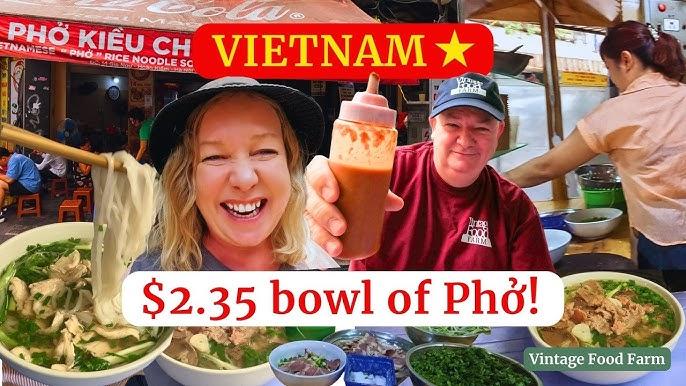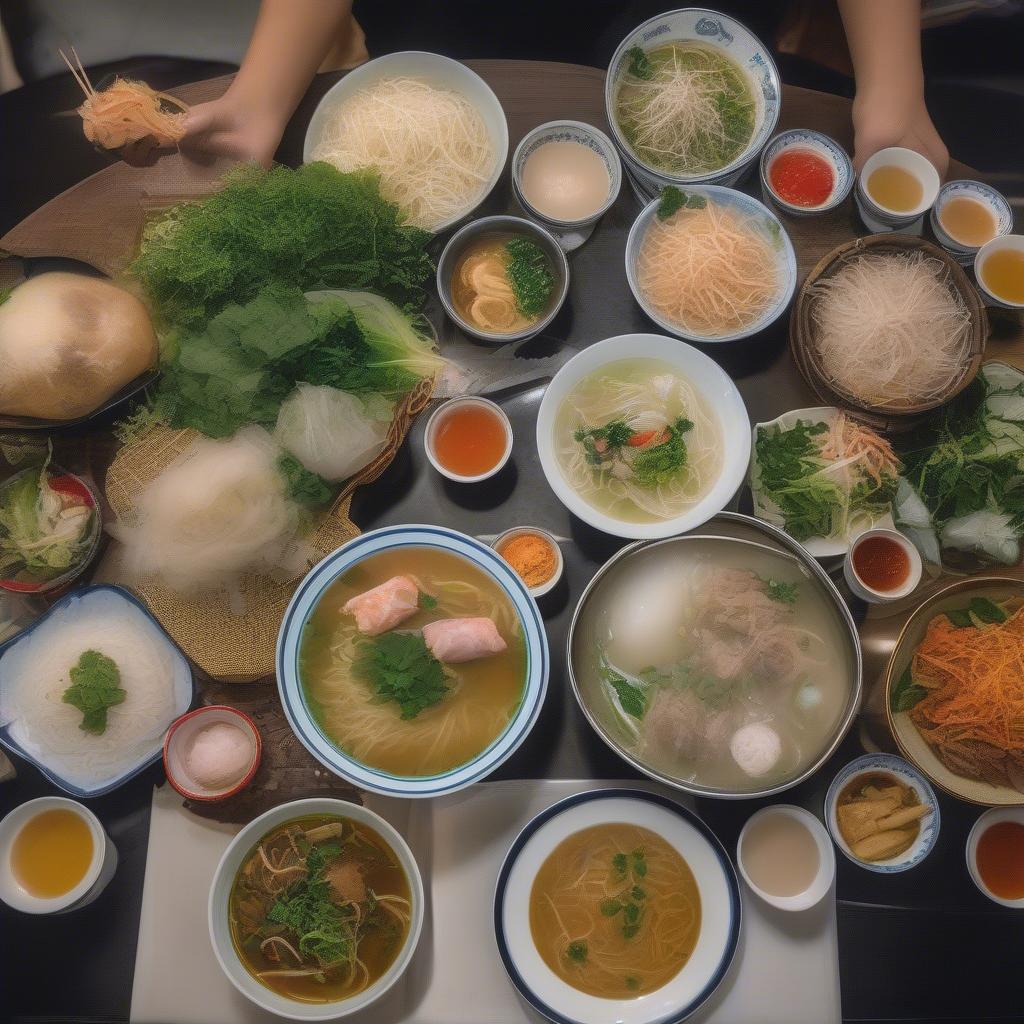
Noodle soup is synonymous with Vietnamese cuisine. From bustling Hanoi streets to the tranquil Mekong Delta, the aroma of simmering broth and fresh herbs fills the air, a testament to the nation’s love for this comforting and flavorful dish. But beyond its deliciousness, Vietnamese noodle soup, in its myriad forms, tells a story of cultural influences, regional adaptations, and resourceful culinary innovation. The Fascinating Backstory Of Vietnam’s Beloved Noodle Soup reveals a dish deeply woven into the fabric of the nation’s history and identity.
Table Content:
A Culinary Melting Pot: Influences and Origins
Vietnamese noodle soup wasn’t born in a vacuum. Its evolution reflects centuries of cultural exchange and adaptation. The most prominent influence is arguably from China, where noodle-based soups have a long and rich history. The French colonial period also played a role, introducing ingredients like beef and techniques that subtly shaped Vietnamese culinary practices. However, rather than simply adopting these external influences, Vietnamese cooks transformed them, creating something uniquely their own. The fascinating backstory of Vietnam’s beloved noodle soup involves this ingenious fusion of foreign inspiration with local ingredients and culinary traditions. For instance, while Chinese noodle soups often feature heavier broths, Vietnamese versions tend to emphasize freshness and a delicate balance of flavors.
One can trace the origins of specific noodle soup variations to different regions of Vietnam. Pho, arguably the most internationally recognized Vietnamese noodle soup, is believed to have originated in northern Vietnam in the early 20th century, possibly near Hanoi. Its rich beef broth, flat rice noodles, and aromatic herbs represent the northern Vietnamese culinary preference for savory and slightly sweet flavors. Bún bò Huế, a spicier and more robust noodle soup, hails from the central Vietnamese city of Hue, reflecting the region’s penchant for bolder tastes.
 Vietnamese Noodle Soup Street Food Hanoi
Vietnamese Noodle Soup Street Food Hanoi
From Humble Beginnings to National Treasure: The Evolution of Pho
The story of Pho in particular is a microcosm of the fascinating backstory of Vietnam’s beloved noodle soup. Initially a simple street food sold by itinerant vendors, Pho gradually gained popularity, becoming a staple in Vietnamese households and eventually a culinary ambassador for the country on the global stage. Its evolution mirrors Vietnam’s own journey, from a nation shaped by various cultural forces to a proud and distinct culinary powerhouse.
“The beauty of Pho lies in its simplicity,” explains acclaimed Vietnamese chef, Bùi Thị Xuân. “High-quality ingredients and a slow-simmered broth are the keys to its enduring appeal.” Indeed, the clear, fragrant broth, often simmered for hours with spices like star anise, cinnamon, and cloves, is the heart and soul of Pho.
 Pho Ingredients Fresh Herbs Noodles
Pho Ingredients Fresh Herbs Noodles
Beyond Pho: Exploring the Diverse World of Vietnamese Noodle Soups
While Pho is the undisputed king, the fascinating backstory of Vietnam’s beloved noodle soup encompasses a whole royal court of regional variations. Bún chả, a Hanoi specialty, features grilled pork served with vermicelli noodles, fresh herbs, and a dipping sauce. Cao lầu, a unique noodle dish from Hoi An, showcases thick, chewy noodles with char siu pork, shrimp, and crispy croutons, reflecting the town’s historical trading connections. Each region boasts its own signature noodle soup, each telling a unique story of local ingredients, culinary traditions, and cultural influences.
“Vietnamese noodle soups are a reflection of the country’s diverse regional landscapes,” notes food historian, Nguyễn Văn An. “From the mountainous north to the fertile Mekong Delta, each bowl tells a story of its place of origin.” This diversity is what makes exploring the world of Vietnamese noodle soups so fascinating.
 Bun Cha Hanoi Vietnamese Noodle Soup
Bun Cha Hanoi Vietnamese Noodle Soup
Experiencing Authentic Vietnamese Noodle Soup at Com Com Restaurant
Craving a taste of Vietnam’s rich culinary heritage? At Com Com Restaurant in London, we bring the authentic flavors of Vietnamese street food to your table. From our meticulously crafted Pho to a diverse selection of regional noodle soup specialties, we offer a journey through the fascinating backstory of Vietnam’s beloved noodle soup. Come and experience the vibrant tastes of Vietnam with us!
Conclusion
The fascinating backstory of Vietnam’s beloved noodle soup is a testament to the country’s rich culinary heritage and its ability to transform external influences into something uniquely its own. From the iconic Pho to a plethora of regional variations, each bowl tells a story of cultural exchange, regional adaptations, and culinary innovation. So, the next time you savor a bowl of Vietnamese noodle soup, remember that you’re not just enjoying a meal; you’re partaking in a culinary tradition that has evolved over centuries. Come and experience this vibrant tradition at Com Com Restaurant and discover the fascinating world of Vietnamese noodle soups.
FAQ
What is the most popular Vietnamese noodle soup? Pho is generally considered the most popular Vietnamese noodle soup, known for its rich beef broth and aromatic spices.
What are some other popular types of Vietnamese noodle soup? Other popular options include Bún bò Huế, Bún chả, Cao lầu, and Bún riêu.
Where can I find authentic Vietnamese noodle soup in London? Com Com Restaurant offers a diverse selection of authentic Vietnamese noodle soups.
What makes Vietnamese noodle soup so special? Vietnamese noodle soups are known for their fresh ingredients, fragrant broths, and delicate balance of flavors.
Are there vegetarian options for Vietnamese noodle soup? Yes, many Vietnamese restaurants offer vegetarian versions of noodle soups, often featuring tofu or mushrooms.
What are the key ingredients in Pho broth? Typical Pho broth ingredients include beef bones, onions, ginger, star anise, cinnamon, and cloves.
What are some common toppings for Vietnamese noodle soup? Common toppings include fresh herbs like basil and cilantro, bean sprouts, lime wedges, and chili peppers.
